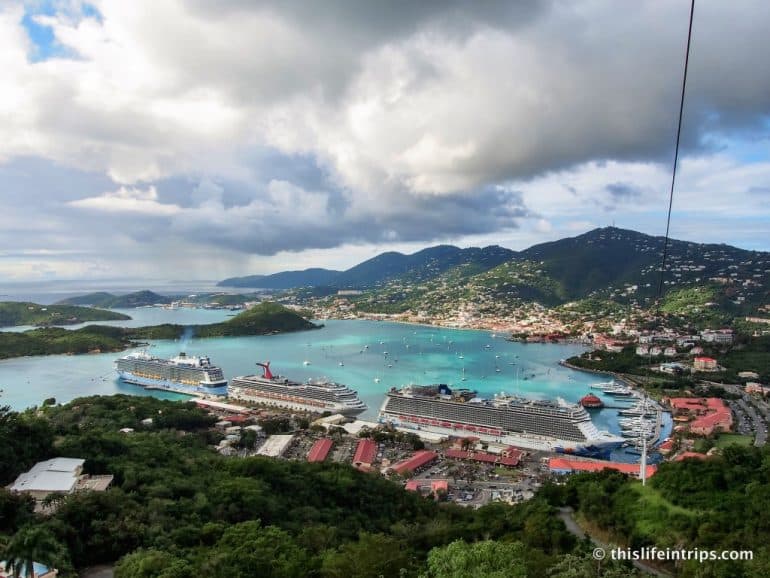For many Canadians, the idea of trading harsh winters for sun-drenched beaches and a laid-back island lifestyle is nothing short of a dream. The Caribbean, with its year-round warm weather, vibrant culture, and stunning natural beauty, offers an enticing escape from the cold.
Beyond the breathtaking scenery, many Caribbean nations boast a lower cost of living, making daily expenses like groceries, dining, and even housing more affordable than in major Canadian cities. The slower pace of life and friendly local communities further add to the appeal, promising a stress-free alternative to the hustle of urban living.
But while the Caribbean lifestyle seems like paradise, relocating isn’t as simple as packing a suitcase. Living on an island comes with unique challenges, from hurricane seasons and infrastructure limitations to work permits and healthcare accessibility.
Some islands are more affordable than others, and cultural differences can take time to adjust to. Whether you’re considering a seasonal getaway or a permanent move, understanding the realities of island life will help ensure a smooth transition.
In this guide, we’ll break down the essential facts about living in the Caribbean as a Canadian—from the cost of living and residency options to healthcare, safety, and everyday conveniences. Before you swap snow for sand, here’s what you need to know.
Climate and Weather: It’s Not Always Perfect
The idea of basking in year-round sunshine is one of the biggest draws of Caribbean life, but the reality of the region’s climate comes with some trade-offs. Yes, the Caribbean offers warm temperatures throughout the year, often ranging between 24°C and 32°C (75°F to 90°F), but the humidity can be intense, especially during the wet season.
If you’re used to Canada’s dry air, adjusting to the sticky, tropical heat might take time—expect to sweat more and rely on air conditioning, which can drive up electricity costs.
Unlike Canadian winters, which you can prepare for with warm clothing and a snow shovel, hurricanes and tropical storms are far less predictable and can be devastating. The official hurricane season runs from June to November, with the peak months being August and September.
Some islands, like Barbados, Aruba, and Trinidad & Tobago, sit outside the hurricane belt and experience fewer storms, while others—such as The Bahamas, Puerto Rico, and the Cayman Islands—are at higher risk.
If you plan to move permanently, you’ll need to consider storm-resistant housing, emergency preparedness, and potential disruptions like power outages and flight cancellations during extreme weather events.
Understanding these seasonal shifts is crucial for planning daily life. For example, if you’re considering running a business or working remotely, it’s important to know that heavy rains and storms can disrupt internet service and transportation. On the flip side, off-season months often bring lower rental prices and fewer crowds, which can be a plus for long-term residents.
In short, while Caribbean weather is vastly preferable to freezing Canadian winters, it’s not always picture-perfect. The humidity, seasonal storms, and occasional extreme weather events are all factors to consider before making the move.
Cost of Living: Cheaper, but Not Everywhere
The Caribbean is often seen as an affordable alternative to life in Canada, but the reality depends on which island you choose. Some destinations offer a significantly lower cost of living, while others can be just as—if not more—expensive than major Canadian cities.
It’s essential to do your research and understand how expenses like housing, groceries, and healthcare will impact your budget.
Housing Costs: Some Islands Are Affordable, Others Are Not
If you’re looking for budget-friendly options, places like the Dominican Republic, Jamaica, and Mexico’s Caribbean coast (e.g., Playa del Carmen, Tulum) offer relatively affordable rent and real estate prices. A one-bedroom apartment in Santo Domingo or Montego Bay can cost $500–$900 CAD per month, while purchasing a condo or house can be far cheaper than in Toronto or Vancouver.
On the other end of the spectrum, high-demand islands like the Cayman Islands, Bermuda, and the Bahamas come with premium price tags.
In Grand Cayman, for example, the average rent for a one-bedroom apartment in a desirable area can exceed $3,000 CAD per month, and buying property often requires government approval. If your goal is to stretch your budget, opting for a less tourist-heavy island will make a big difference.
Grocery Prices: Expect to Pay More for Imported Goods
One of the biggest cost surprises for new Caribbean residents is the price of groceries. Because many islands import most of their food from the U.S., Canada, or Europe, staples like dairy, meat, and packaged goods are significantly more expensive than in Canada. For example:
- A gallon of milk in the Bahamas or Barbados can cost $8–$12 CAD.
- Imported chicken or beef is often 50% more expensive than in Canada.
- Specialty items like almond milk, quinoa, or organic produce come with premium price tags.
The key to saving money on food is to shop at local markets and embrace island-grown products. Fruits, vegetables, and fresh fish are often much cheaper when bought directly from farmers and fishermen. In places like Trinidad & Tobago or the Dominican Republic, you can eat affordably by sticking to local cuisine rather than relying on imported goods.
Healthcare and Insurance: Quality Varies by Island
Access to quality healthcare is another important factor to consider. Some islands, like Barbados, the Cayman Islands, and the Bahamas, have modern hospitals and well-trained medical professionals, often at a lower cost than in Canada.
However, smaller islands or remote areas may lack specialists, advanced equipment, or emergency medical services.
Key points to keep in mind:
- If you’re relocating permanently, private health insurance is a must, as most Caribbean nations do not offer free healthcare to non-citizens.
- Some expats choose to fly back to Canada or to the U.S. for major medical treatments, as local healthcare facilities may not offer specialized procedures.
- Prescription medications can be more expensive or harder to find, so stocking up on essentials before moving is a smart idea.
While the Caribbean can offer a lower overall cost of living, it’s important to factor in these hidden expenses. Some islands make it easy to live well on a budget, while others require Toronto-level salaries to maintain the same standard of living.
Residency and Visa Requirements for Canadians
One of the biggest advantages for Canadians considering a move to the Caribbean is that many islands offer visa-free entry for extended stays, making it relatively easy to test out life in paradise before committing to a permanent move.
However, if you’re planning to stay long-term, work, or even apply for citizenship, it’s important to understand each island’s specific residency rules.
Visa-Free and Long-Stay Options for Canadians
Canadians can visit most Caribbean nations without a visa for stays ranging from 30 to 180 days, depending on the country. Some of the most popular destinations for extended stays include:
- Barbados – Up to 6 months visa-free.
- Bahamas – Up to 8 months visa-free.
- Dominican Republic – 30 days visa-free, extendable for a fee.
- Jamaica – Up to 6 months visa-free.
- St. Lucia, St. Vincent & the Grenadines, Grenada – Up to 6 months visa-free.
- Mexico (Caribbean Coast) – Up to 180 days visa-free.
If you plan to stay beyond the allowed visa-free period, you’ll need to apply for residency or visa extensions, which typically require proof of income, a clean criminal record, and sometimes a local sponsor.
Requirements for Permanent Residency and Citizenship
For those looking to settle permanently in the Caribbean, several islands offer residency programs that can lead to citizenship over time.
- Permanent Residency: Many countries allow Canadians to apply for temporary residency after staying for a certain period (e.g., 1–5 years). Requirements usually include proof of financial stability, local address, and health insurance.
- Citizenship by Naturalization: After maintaining residency for 5 to 10 years, you may become eligible to apply for citizenship, though requirements vary by country.
- Citizenship by Investment: Some Caribbean nations, such as St. Kitts & Nevis, Antigua & Barbuda, and Dominica, offer citizenship programs where you can fast-track naturalization by investing in real estate or making a government donation. This costly immigration solution is definitely not for everyone. For example, getting a second passport in Antigua & Barbuda starts from USD 230,000.
If your goal is long-term residency, it’s best to choose an island with clear pathways to permanent status rather than relying on visa extensions.
Working Remotely vs. Getting a Work Permit
For Canadians who plan to continue working remotely, the good news is that several Caribbean nations have introduced digital nomad visas that allow foreign professionals to live and work legally while enjoying island life. Some options include:
- Barbados Welcome Stamp – 1-year remote work visa, requires proof of annual income over $50,000 USD.
- Antigua & Barbuda Nomad Digital Residence – 2-year visa for remote workers with income over $50,000 USD per year.
- Cayman Islands Global Citizen Concierge Program – Allows remote workers earning $100,000+ USD per year to stay for up to 2 years.
If you want to work for a local company, you’ll likely need to apply for a work permit, which is often a complex and expensive process. Many Caribbean countries prioritize hiring locals, meaning foreigners must prove that their job cannot be filled by a resident. Common industries that welcome foreign workers include tourism, finance, healthcare, and real estate.
Cultural Adaptation and Community
Moving to the Caribbean isn’t just about swapping snow for sand—it’s also about adapting to a different pace of life, cultural norms, and social dynamics. While Canadians are often drawn to the warm hospitality and relaxed island vibe, adjusting to a new way of life can take time. Understanding how things work locally, embracing the slower pace, and building a community are all key to making a smooth transition.
Laid-Back Island Time vs. Canadian Efficiency
If you’re used to Canadian punctuality, fast customer service, and strict schedules, you might find the Caribbean’s “island time” mentality frustrating at first. In many Caribbean nations, things move slower than expected—whether it’s waiting in line at a government office, getting a repair done, or even receiving a restaurant bill.
This isn’t laziness—it’s a cultural difference in prioritizing a stress-free lifestyle over rigid efficiency. Islanders value relationships over deadlines, which can feel frustrating to newcomers but ultimately contributes to the easygoing, relaxed atmosphere that makes the Caribbean so appealing.
One of the best ways to feel at home in the Caribbean is to connect with both expats and locals. Many islands have thriving expat communities, where Canadians and other foreigners gather for social events, networking, and support. These groups can help you navigate life abroad, from finding housing and jobs to understanding local customs.
However, relying only on expat circles can create a bubble that isolates you from local culture. Integrating into the community by building friendships with locals, participating in cultural events, and supporting local businesses will lead to a more fulfilling experience.
Language Barriers — Many Islands Speak English, but Not All
For Canadians moving to an English-speaking island, communication won’t be an issue. Many Caribbean nations—such as Jamaica, Barbados, the Bahamas, and St. Lucia—have English as their official language, though local dialects and accents may take some getting used to.
However, not all Caribbean islands are English-speaking. If you’re considering places like the Dominican Republic, Puerto Rico, Guadeloupe, or Martinique, you’ll need to learn Spanish or French to navigate daily life effectively. While locals in tourist-heavy areas may speak some English, fluency in the local language will make integration much smoother.
Final Thoughts on Island Life for Canadians
Adjusting to life in the Caribbean means embracing a slower, more relaxed way of living, finding a balance between expat circles and local communities, and overcoming potential language barriers. While it may take time to adapt, those who go with the flow, immerse themselves in the culture, and build meaningful connections will find that island life can be incredibly rewarding.
What say you?
Thoughts on Island Life for Canadians?
Let’s hear it!








